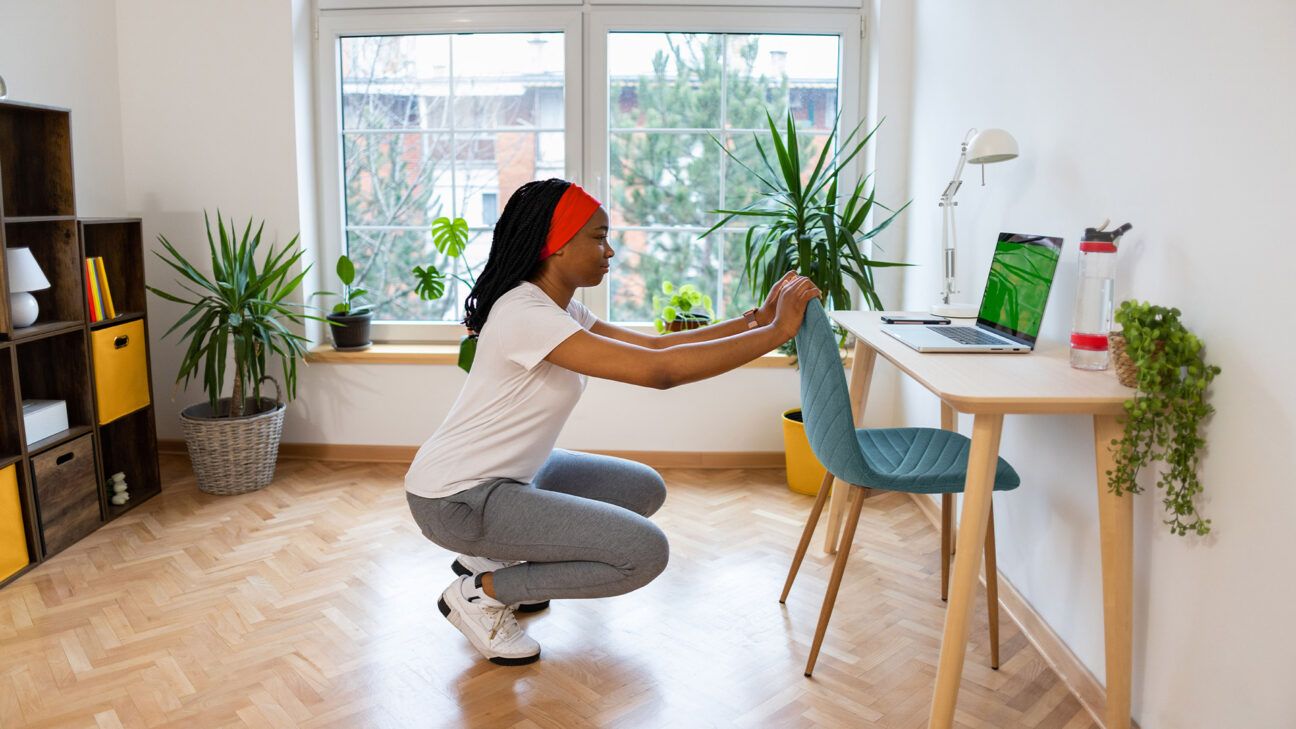 Share on Pinterest
Share on Pinterest- New research has found that 22 minutes of moderate to vigorous exercise can significantly reduce mortality risk in those 50 and over.
- The study points to the widespread reality of a sedentary lifestyle, with many people staying still 8-plus hours per day.
- Experts say that the study’s conclusions, while they may seem obvious, could have an impact on people of all ages.
New research published by the British Journal of Sports Medicine has found that engaging in 22 minutes of moderate to vigorous physical activity per day may reduce your risk of dying if you have a sedentary lifestyle. The study included analyzing the data of 11,989 participants across Norway, Sweden, and the US.
All participants included in the study were 50 or older.
Dr. Carl Cirino, an orthopedic surgeon at New York’s Hospital for Special Surgery, says there are important underlying takeaways for practitioners and patients.
“We all live busy lives, we’ve kind of moved from the hunter-gatherer nomadic lifestyle, to living in nice apartments and homes with lights and electricity, and, you know, all the luxuries that we don’t have to, go out and be as active as we had to be hundreds of years ago,” Cirino said. “This study defines what amount of time is beneficial for people to lower their mortality risk, and [to] break it down into a really robust scientific method, I think was a really important endeavor.”
What the study found
The data was gathered by a hip accelerometer to identify when people were still versus active. The researchers found that even for those who were sedentary for 12 or more hours per day, associated mortality risk was eliminated if that 22-minute threshold was reached.
Even for those who didn’t quite meet the 22-minute mark, some moderate to vigorous activity still meant a drop in mortality rates.
For example, those doing 10 minutes of activity who were sedentary for six hours per day still saw a drop of 32% of mortality risk.
While the research was focused on older adults, Dr. Tracy Zaslow, a primary care sports medicine physician at Cedars Sinai Kerlan-Jobe Institute, says the findings of this study may have an impact on younger people as well.
“I think it’s a reminder for our younger athletes and non-athletes, younger adults and adolescents, that it’s really important for them to build muscle strength and cardiovascular health to be able to maintain that physical activity. The more they do when they’re younger, the stronger that foundation is, the easier it is to maintain when they’re older.”
Vigorous vs. moderate activity
Activities like a brisk walk and mowing the lawn with a power mower are considered by experts to be examples of moderate activity while hiking or playing a game of basketball generally fits into the vigorous category.
Cirino says that he often finds that some people lose access to their preferred activities after surgery and that this study could help him as they identify what activity meets their health goals while also keeping them safe.
“The person who I see as a shoulder and elbow surgeon, they’re interested in tennis singles, they’re interested in pickleball,” Cirino said. “They’re interested in some other sort of overhead activity or sport…This [study] will help me guide them better to some of the other activities that they can do.”
This study also has stated limitations. The researchers point out that discerning differences between different activities can be a challenge with the type of measuring device that was used and that, because of a lack of data, comparing these results to young people is not viable.
Still, Zaslow says that the study is important because it reinforces that, while all activity isn’t created equal—the researchers did identify differences in the benefits for those who only participated in light exercise—something is better than nothing.
“Really just encouraging people to find a way to be active, even if you’re not up for going for a run or an intense bike ride. But, take a walk around the block, do some squats, walk up and down the stairs, so many different things that can be done to help to maintain a healthy, active, lifestyle.”
Future research
The researchers suggest that urging older adults to participate in small chunks of activity could be a treatment pathway moving forward.
In Zaslow’s case, as a board-certified pediatrician, she says that further efforts to understand reducing the risk of sedentary lifestyle in youth are welcome. She says that while kids, especially those in the six to ten range, are generally presumed to be active, that isn’t always the case.
“There’s also a lot of sedentary behavior that has been kind of developed in our society for many reasons,” Zaslow said. “And so the kids are oftentimes less active now than their previous generations. And so, how does that affect them and what’s the minimum that we really need to be encouraging for them to have the healthiest life going forward?”
Takeaway
A new study finds that working out vigorously for just 22 minutes a day can counteract the health impacts of prolonged sitting.
